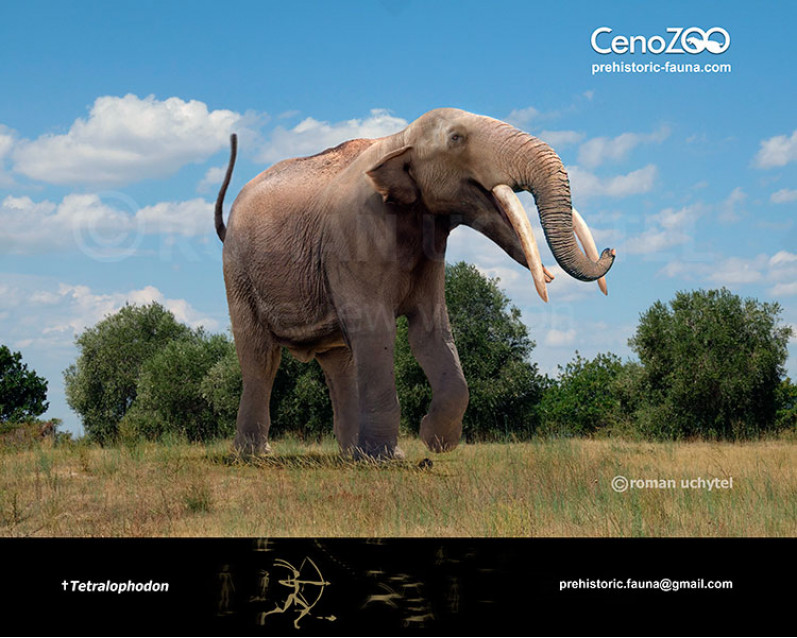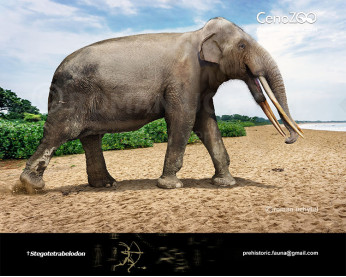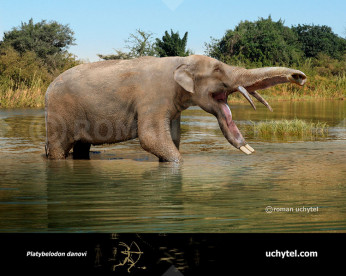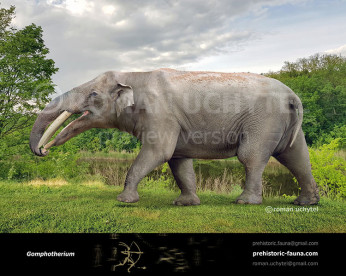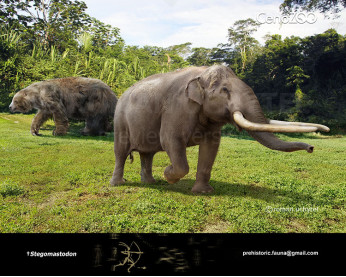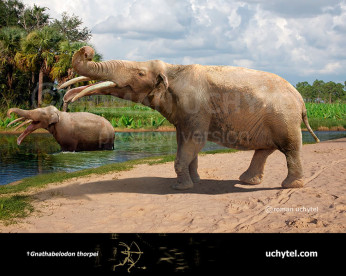Tetralophodon
2844828448
Tetralophodon (†Tetralophodon Falconer & Cautley, 1847))
Order: Proboscidea
Family: Elephantidae
Dimensions: length - 5,5 m (with tusks), height - 3,5 m, weight - 10 000 kg
Temporal range: during Middle Miocene–Late Miocene epoch (Africa and Europe)
Gomphotheres are an extinct group of proboscideans related to modern elephants. They were widespread across Afro-Eurasia and North America during the Miocene and Pliocene epochs and dispersed into South America during the Pleistocene as part of the Great American Interchange. A large individual of the European species Tetralophodon longirostris is suggested to have been 3.45 metres tall at the shoulder and up to 10 tonnes in weight. Specimens of Tetralophodon from the late Miocene of East Africa have been suggested to be browsers and mixed feeders based on mesowear analysis. Analysis of tooth wear suggest that these individuals had developed proal movement (back to front motion) in the lower jaws, akin to that used by modern elephants, but different from that used by earlier gomphotheres.
Payment
You may use multiple payment methods to buy image such as credit cards, PayPal and bank transfer.
Tetralophodon (†Tetralophodon Falconer & Cautley, 1847))
Order: Proboscidea
Family: Elephantidae
Dimensions: length - 5,5 m (with tusks), height - 3,5 m, weight - 10 000 kg
Temporal range: during Middle Miocene–Late Miocene epoch (Africa and Europe)
Gomphotheres are an extinct group of proboscideans related to modern elephants. They were widespread across Afro-Eurasia and North America during the Miocene and Pliocene epochs and dispersed into South America during the Pleistocene as part of the Great American Interchange. A large individual of the European species Tetralophodon longirostris is suggested to have been 3.45 metres tall at the shoulder and up to 10 tonnes in weight. Specimens of Tetralophodon from the late Miocene of East Africa have been suggested to be browsers and mixed feeders based on mesowear analysis. Analysis of tooth wear suggest that these individuals had developed proal movement (back to front motion) in the lower jaws, akin to that used by modern elephants, but different from that used by earlier gomphotheres.

